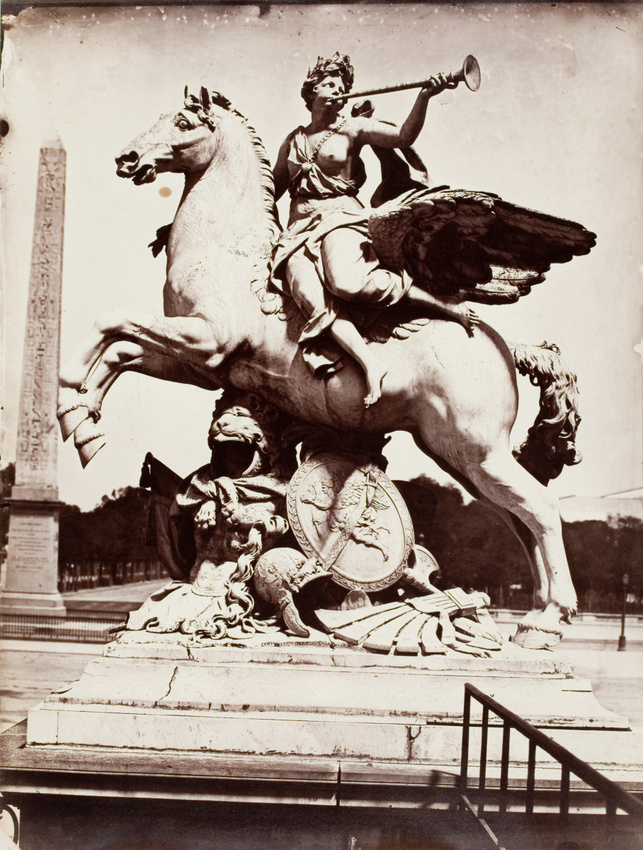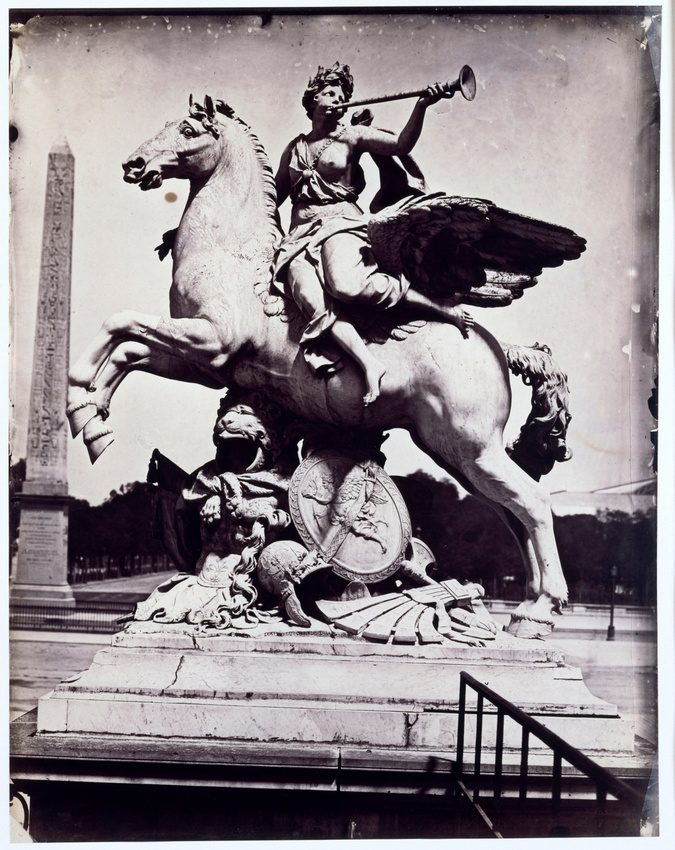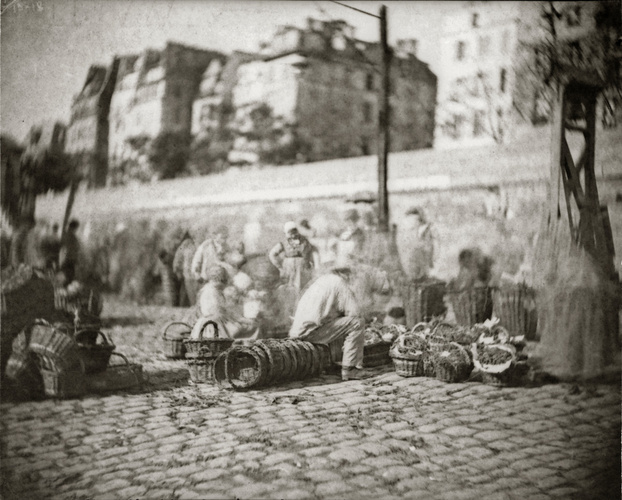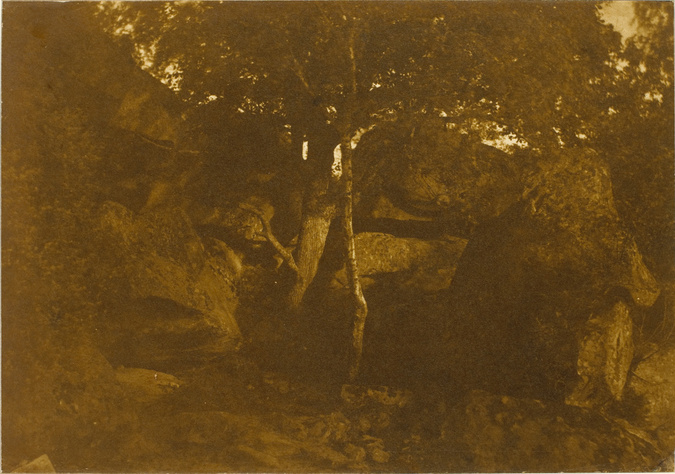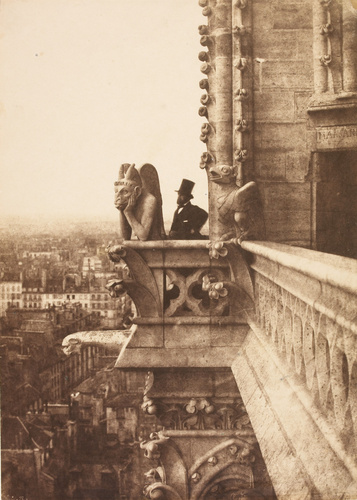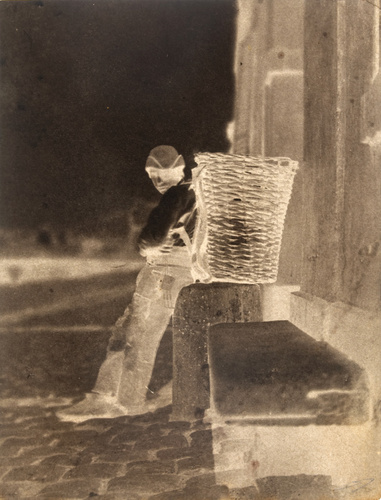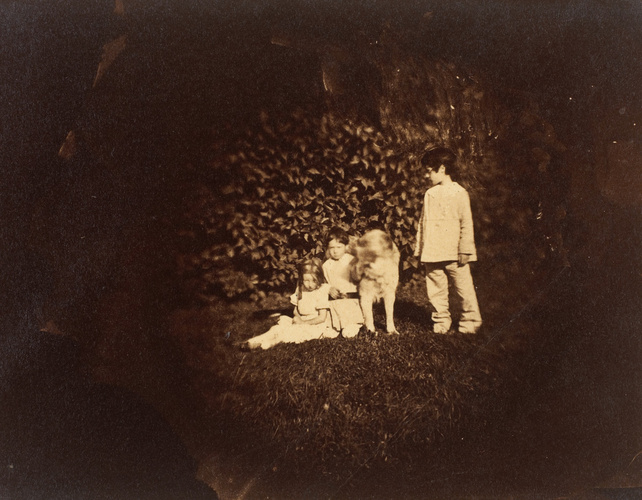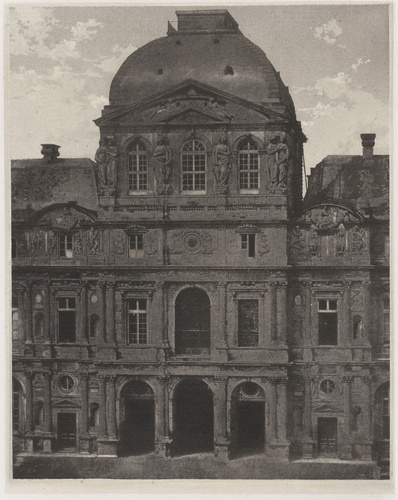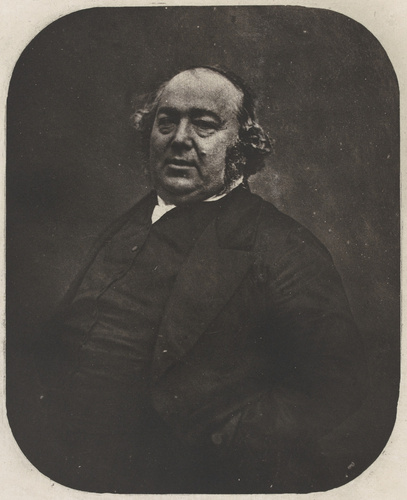"La Renommée chevauchant Pégase", sculpture d'Antoine Coysevox, place de la Concorde, à Paris
"Gutenberg gave the world the ability to print inner thoughts; today, sire, you have the means, through heliography, to print the world outside." Through heliography, beautiful works of art in all genres can be reproduced, published and made widely accessible. (“Memoir to the Emperor on gravure printing”, by Ch. Nègre –7 June 1858)
In this same memoir to the emperor, Charles Nègre submitted a project to publish a pictorial history of art, to be illustrated using the gravure printing process he had just developed. The project came to nothing, nor did that for a publication on Paris and its history which he suggested to the Prefect of Paris in August that year.
To encourage him, the head of the Beaux Arts department, Monsieur de Mercey, commissioned him to do a series of prints of the statues in the Tuileries gardens. Nègre began work in June 1859, producing thirty photographs, and putting forward the prints for approval by the Beaux Arts directors. Once again he met with disappointment; Monsieur de Mercey fell ill – he died in 1860 – and his successor did not continue the project.
Fame riding Pegasus is one of the sculptures selected for that monograph. It was made in 1702 by Antoine Coysevox , with its counterpart Mercury riding Pegasus, for the drinking trough in Marly. The two sculptures were moved in 1719 to the entrance of the Tuileries gardens.
